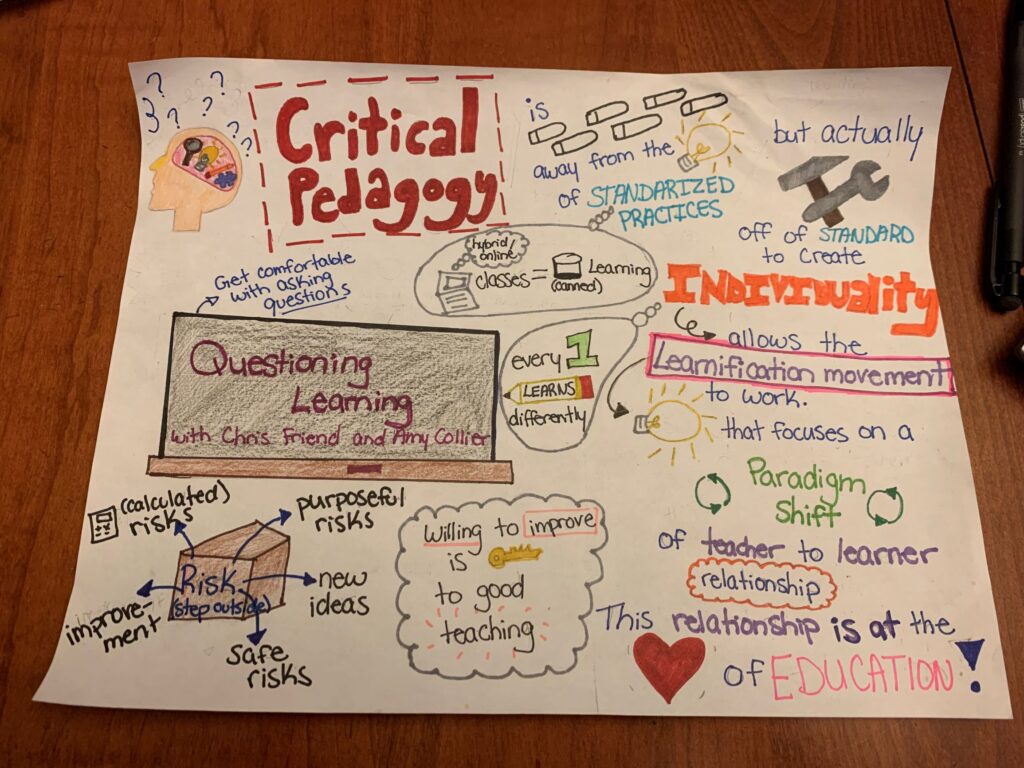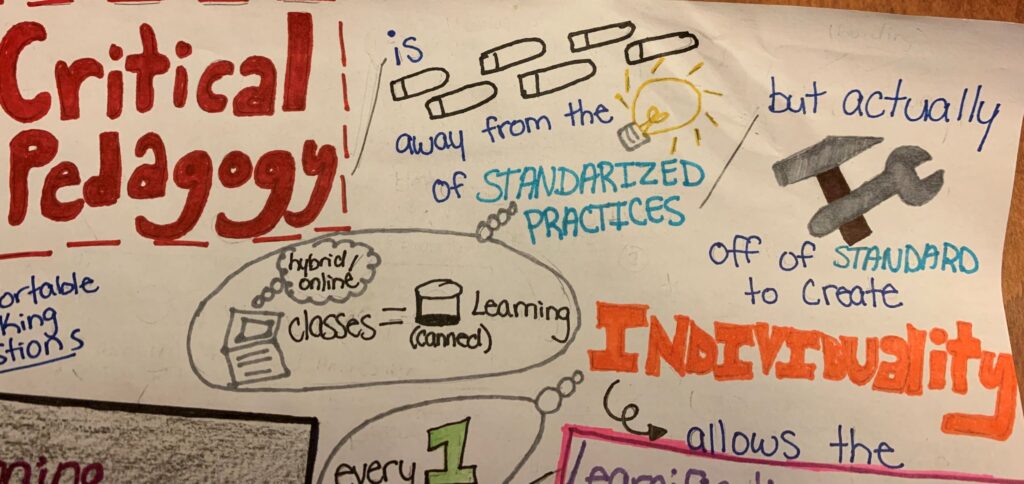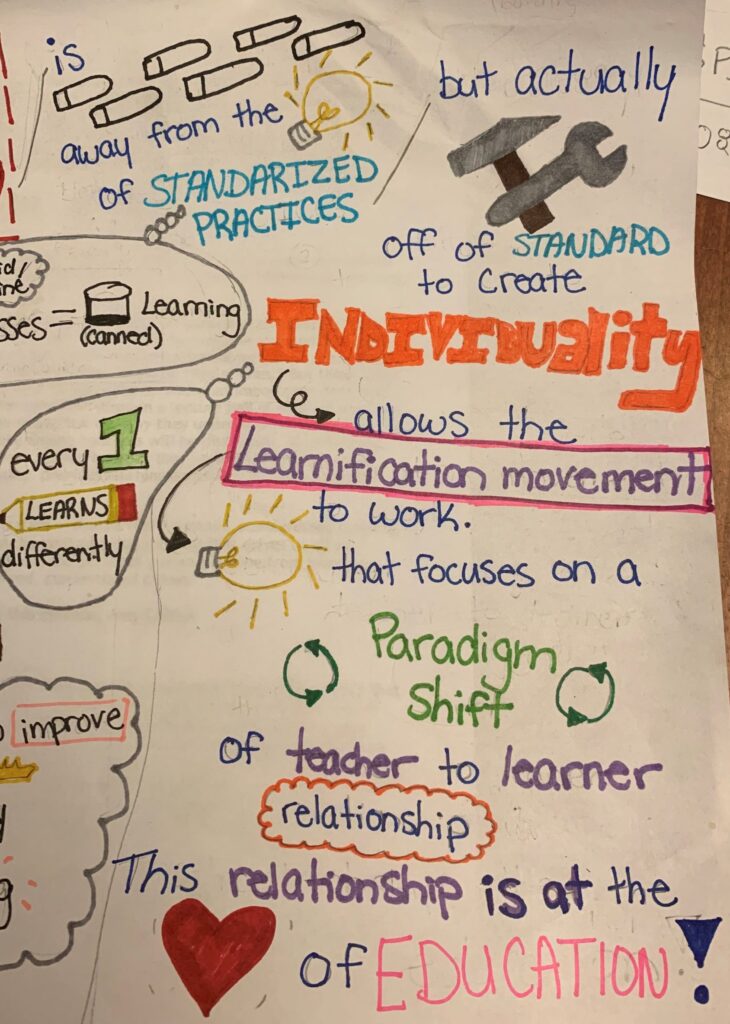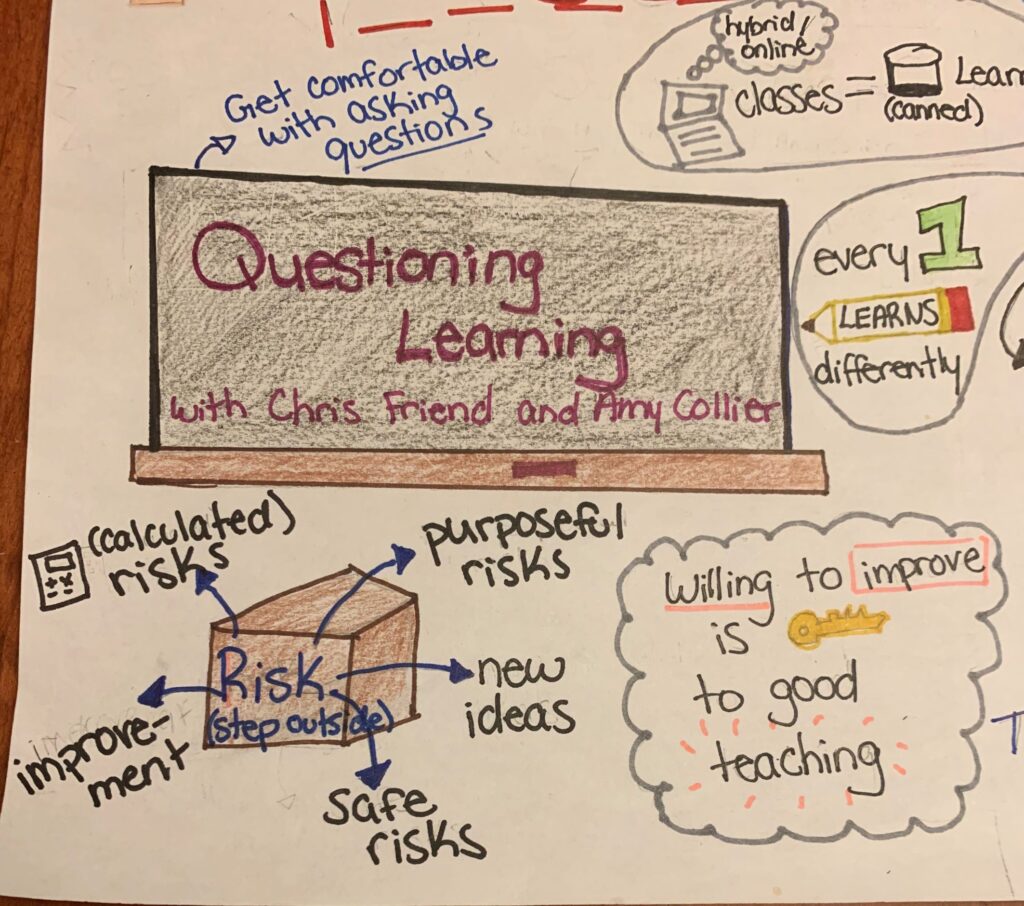I decide to do a sketch-note on the podcast “Questioning Leaning” with Chris Friend and Amy Collier.

The podcast had many great ideas about critical pedagogy which made it difficult to sketch. So, let me walk you through my thought process while creating this sketch-note.

I started off at the top with Critical Pedagogy explaining the idea from the podcast that “best practices” is being too standardized causing us to strip away from individuality, which is the reason we want to learn. So from my understanding we need to be stepping away from the idea of standardized practices to be able to build and grow into individuals. If we constantly stayed with the the same constraints we as individuals simply would not grow or progress. Each student is different therefore we need to apply the proper teaching practices in order to achieve optimal results.

This follows into the learnification movement which is essentially doing just that by developing the classroom into individualized learners instead of a community of learning. When you focus solely on learning you eliminate the relationship of student and teacher which is defined by the paradigm shift in my illustration. Amy stated in the podcasts Questioning learning that this “relationship is at the heart of education or the heart of learning”.
In the podcasts Chris and Amy explain pedagogy as being a method of teaching that is essential for our education system and shape the youth of tomorrow. In the podcasts the Chris and Amy define critical pedagogy as being an ideal learning practice. Chris and Amy use online classes as an example to reinforce this point by stating that online classes are equal to canned learning. As they dive into it we begin to understand more and more the detriment to our kids learning when everyone is expected to learn exactly the same.

Lastly, the bottom illustrations were just to capture other key ideas of critical pedagogy. Amy talked a lot about how we all need to get comfortable with asking questions to avoid making assumptions. She also mentioned how as teachers we should be always willing to improve and stepping out of the box to take risks. She highlights that risks are good, but it’s important to take calculated, safe and purposeful risk because it is still your career and the education of students at hand.
